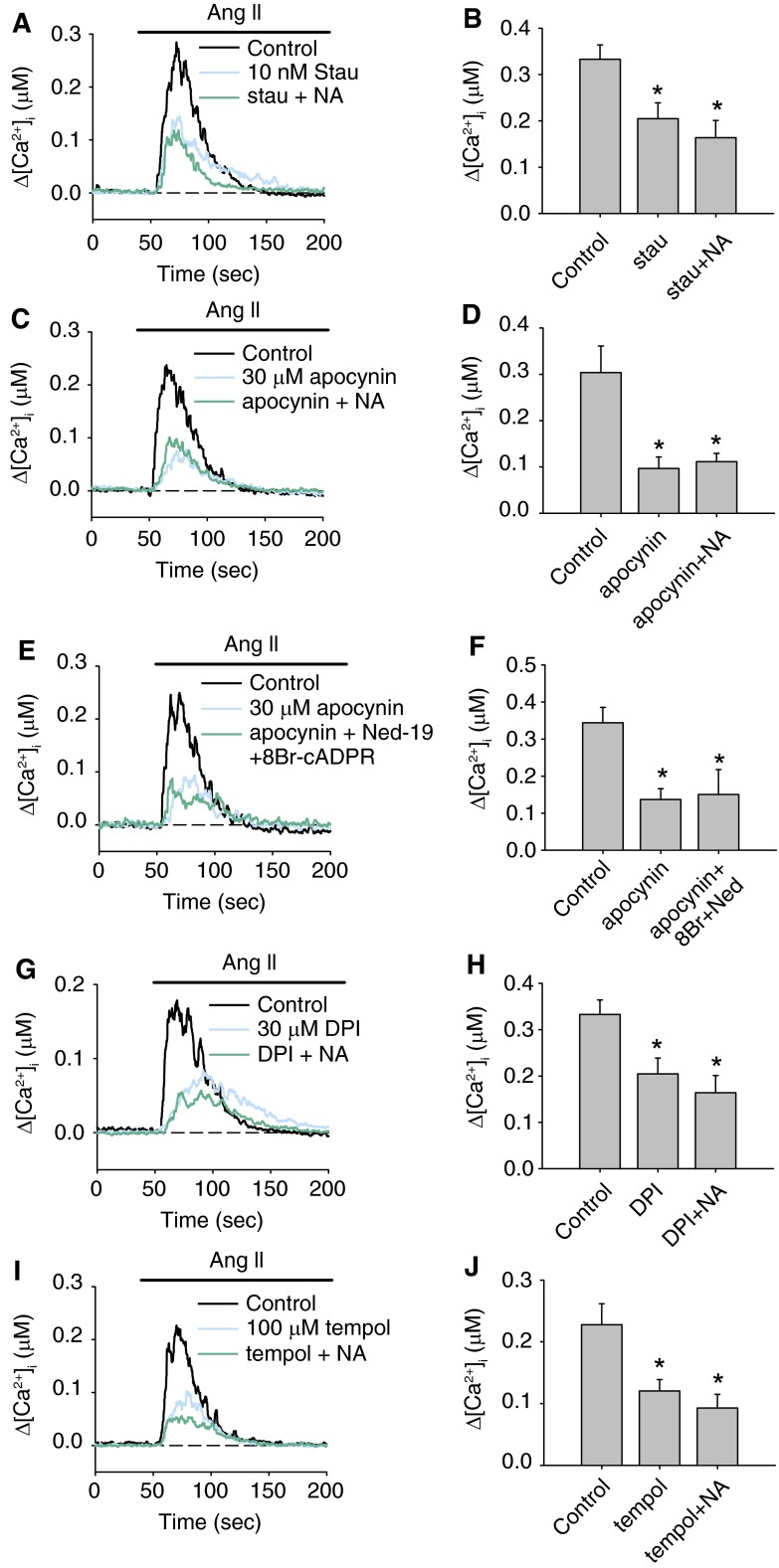Figure 6.
Protein kinase C–NADPH oxidase–reactive oxygen species (PKC-NOX-ROS)-dependent activation of CD38 in PASMCs. (A and B) Mean traces and mean peak Δ[Ca2+]i showing the effect of PKC inhibition with staurosporine (Stau) (10 nM) on AICR in the absence or presence of NA (20 mM) in PASMCs (n = 8–10 experiments in each group). (C and D) Mean traces and mean peak Δ[Ca2+]i showing the effect of the NOX inhibitor apocynin (30 μM) on AICR in the absence or presence of NA (n = 5–6 experiments in each group). (E and F) Mean traces and mean peak Δ[Ca2+]i showing the effect of apocynin (30 μM) on AICR in the absence or presence of 8-Br-cADPR (10 μM) and Ned-19 (1 μM) (n = 8–9 experiments in each group). (G and H) The effect of the NOX inhibitor diphenyleneiodonium (DPI) (30 μM) on AICR in the absence or presence of NA (n = 8–10 experiments in each groups). (I and J) The effect of the ROS scavenger tempol (100 μM) on AICR in the absence or presence of NA (n = 9 experiments in each group). *Significant inhibition of AICR compared with control. There was no additional significant inhibition of AICR in cells treated with NA compared with staurosporine, apocynin, DPI, or tempol alone.

